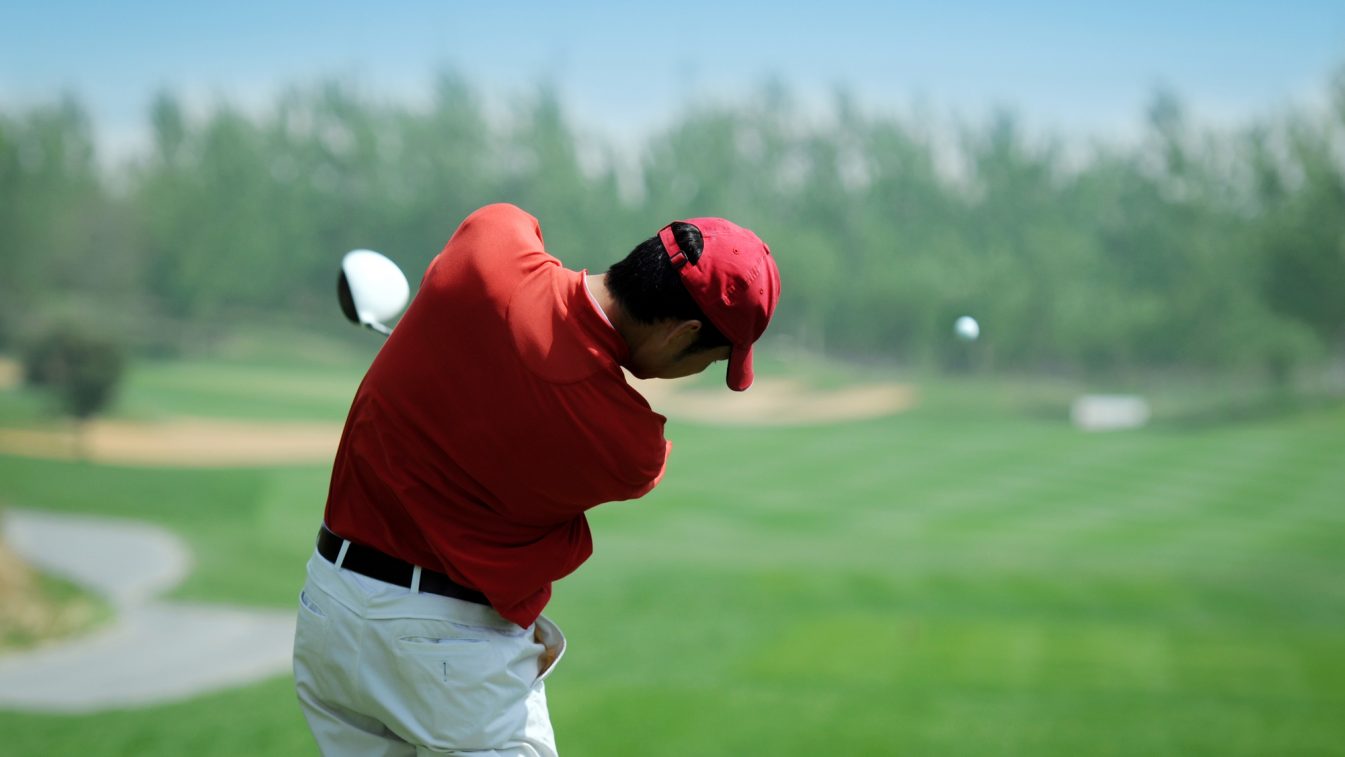
The slice is one of the most common faults in golf – perhaps not as destructive as a hook, but certainly not conducive to putting a good score together. And sadly, it’s not always a quick fix.
This is because that big left-to-right, distance-sapping shot of yours (we’re referring to right-handers in this article) might be the result of several factors.
PGA professional Keith Williams is here to offer some advice. These are his 5 tips on how to avoid slicing the ball.
1. Work on the correct weight shift
Almost all slicers have an incorrect or inefficient weight transfer – I see it all the time.
It’s common to see players get to the top of their backswing, and then the first move is from the shoulders and arms. This is where the expression ‘coming over the top’ often comes from.
The feet get stuck in the ground and there’s too much weight on the back foot.
With good weight shift, the correct sequence of movements starts with the lower body – feet, knees, hips – and then the upper torso, arms, and hands follow, in that order.
It all happens rapidly, of course, and I wouldn’t teach it as basic one to six points. But when the sequencing is right, the hands and arms will almost certainly have the chance to drop the club down, keeping the right elbow closer to the body.
In other words, the hands, which control the club, will be on a more inside path, and the shaft and clubhead will follow.
2. Turn through impact
A good player who has an efficient weight shift turns their body through impact and in most cases doesn’t have a problem slice.
If you look at almost all the top players at impact, their shoulders would probably be 15-30 degrees left of the target and the hips will be anything from 30-60 degrees leftwards. So, they’ve moved those forward and started turning left before they even get close to impact.
Points 1 and 2 above are about body motion being a more sustainable way to cure the slice.
There may be other reasons why you’re losing your ball to the right, of course…
3. Don’t aim for a slice
We’ve all seen it – and we’ve probably all tried it at one point, hoping it’s the answer. It’s not!
When you’re playing in a left-to-right wind, the slice is exacerbated. Even worse is going into a wind that’s coming off the left, and the ball goes nowhere. It just slices up against the wind and has no forward momentum.
You’re never going to make progress if you aim more left. What tends to happen is that you swing more left to right of the target, which encourages you to open the face even more.
Improving your swing path is only of any use if you can learn to get the face more squared up.
You have to make a committed effort to square up the stance a little and then focus on that correct weight shift and on turning the body through impact.
4. Try a stronger grip to make it easier to square up the clubface
The clubface is naturally trying to rotate closed as it approaches impact, but many players struggle to allow this to happen effectively.
No pro feels like they’re giving a great lesson when they’re trying to get the player to consciously rotate the clubface in order to square it up at impact.
To perfect it is almost impossible – just how much rotation is required?
Some people will overdo it and suddenly they’ve gone from a slice to a massive pull left – so now they have two bad shots!
However, you’ve got to try and get the clubface squared up. One way of doing that is to strengthen your grip a little, which has a tendency to deliver the club more closed.
For a right-handed player, this means seeing more knuckles of the left hand and, if absolutely necessary, dropping the right hand slightly more under the shaft.
Of course, it’s not guaranteed. Dustin Johnson has got a strong left-hand grip, a shut clubface, and he produces a fade, so he clearly hits it with a slightly open face at impact.
5. Use softer flex shafts
As a player swings down, the clubhead is initially lagging behind the hands, even for a poor player.
As we know, a top pro can keep it lagging right down near the ground behind the hands.
Stiffer and heavier shafts make it much more difficult to catch up correctly, whereas a light and flexible shaft helps kick the clubhead forward pre-impact.
What that does is when it kicks it forward it creates more rotation of the face which helps square the face up and also adds loft to the clubface minimising the sidespin applied to the ball at impact.
That’s why a softer, lighter shaft can minimise a slice contrary to what people think, which is that it’ll act like a fishing rod, staying flexible and encouraging a bigger slice.
A softer shaft should be recommended for someone who slices, and a player who has real problems with a hook should probably try a heavier, stiffer shaft, which would minimise the tendency to turn the face over.
I’d also recommend using more loft, so switching to hybrids instead of using 4 and 5 irons, certainly for those mid handicaps who really suffer with a slice.
A 5-iron loft today is at least equivalent to a 3 or 4-iron of yesterday. My 3-iron when I played on Tour in the eighties is the 5-iron in your set, but we didn’t have the option of hybrids.
Loft is great for the average player – you’ll get a better ball-flight, more control, and longer, straighter shots.
Specialist golf insurance through Golf Care
You might want to protect your golf clubs and much more against loss, theft, and damage by taking out specialist golf insurance.
Get an instant online quote now.
Please note the information provided on this page should not be taken as advice and has been written as a matter of opinion. For more on insurance cover and policy wording, see our homepage.
Get a quick quote for Golf Insurance
Get A Quote